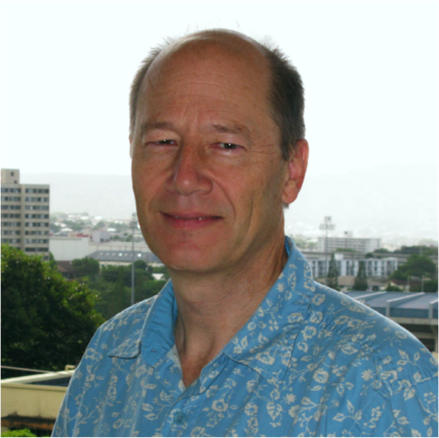 Bruce Howe received engineering BS and MS degrees in 1978 from Stanford University and the PhD degree in oceanography from the Scripps Institution of Oceanography (SIO), University of California, San Diego, in 1986. From 1986 to 2008 he worked at the Applied Physics Laboratory, University of Washington, and is presently Professor and Chair of Ocean and Resources Engineering, University of Hawaii at Manoa.
Bruce Howe received engineering BS and MS degrees in 1978 from Stanford University and the PhD degree in oceanography from the Scripps Institution of Oceanography (SIO), University of California, San Diego, in 1986. From 1986 to 2008 he worked at the Applied Physics Laboratory, University of Washington, and is presently Professor and Chair of Ocean and Resources Engineering, University of Hawaii at Manoa.
At Stanford and then at the Universität Karlsruhe, he developed laser Doppler velocimetry for air-sea interaction and atmospheric use. Since he has worked on ocean acoustic tomography, including Moving Ship Tomography, Acoustic Thermometry of Ocean Climate (ATOC) and the North Pacific Acoustic Laboratory (NPAL). Howe helped establish on-going Ocean Observatories efforts, working on fixed infrastructure (cable power systems and moorings), mobile platforms (gliders as acoustic/nav/comm nodes), and hybrids (moored vertical profilers). A long-term goal is to integrate acoustics systems in ocean observing for navigation, communications, timing, and science applications.
At Station ALOHA 100 km north of Oahu, Howe installed and operates the ALOHA Cabled Observatory in 4728 m water depth – the world’s deepest cabled science observatory. Howe is part of an international effort (JTF SMART Cables) to incorporate sensors into commercial trans-ocean submarine telecommunication cable systems.